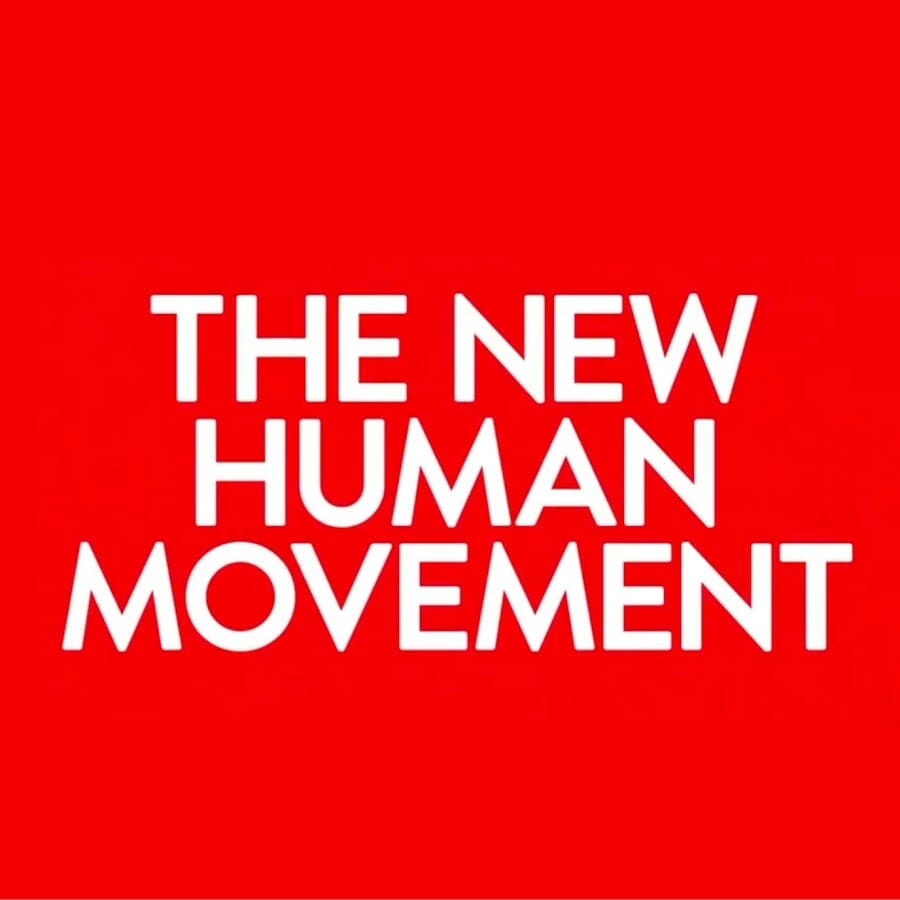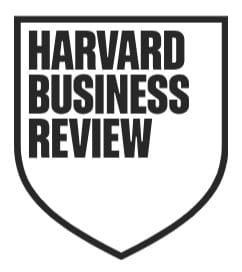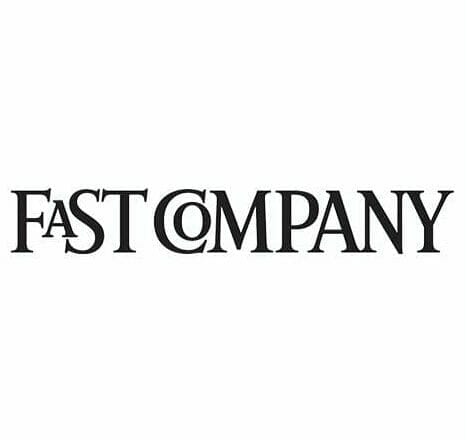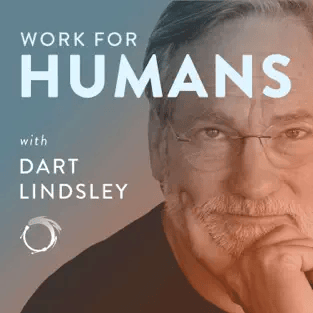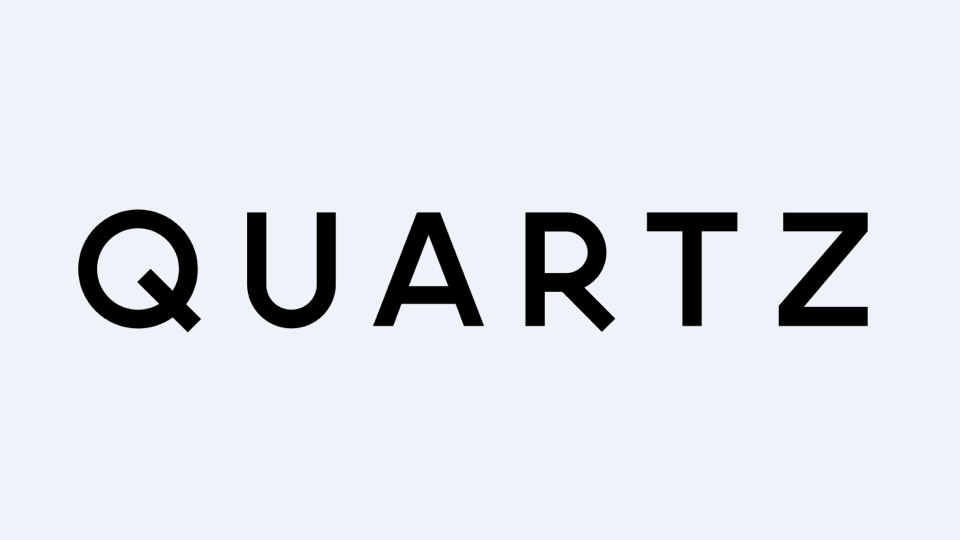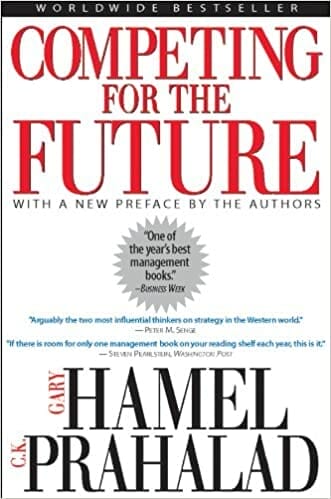Videos
Learn More About Gary Hamel
How do you build an organization that’s as daring, resilient and innovative as the times demand? How do you banish bureaucracy and master the art of entrepreneurship at scale? How do you unleash the initiative and ingenuity of every team member? How do you triple the pace of organizational transformation at a third of the cost?
London Business School professor Gary Hamel, Ph.D., has been working to answer these critical questions since the 1980s, when he watched the auto industry in his native Michigan get out-maneuvered by new global rivals. Seeing first-hand how inertia and incrementalism could cripple an industry and ruin the lives of employees, he has dedicated himself to helping companies anticipate the future and build tomorrow’s essential advantages today.
Named the World’s #1 Business Thinker by The Wall Street Journal and co-founder of The Management Lab, an organization that builds platforms and tools to support high-velocity change, Hamel is a sought-after speaker and advisor for the most prestigious leadership events around the globe. As a consultant, he has led change initiatives in many of the world’s most admired companies, helping leaders design break-out strategies, create entrepreneurship at scale and enlarge their capacity for innovation — work that has created billions of dollars in market value.
Mastering the Art of Entrepreneurship at Scale
Hamel beliefs that entrepreneurship is the most powerful force for creating progress and prosperity. As a long-term resident of Silicon Valley, Hamel has seen the transformative power of innovation close-up, and has advised numerous start-ups. The problem is that to build a vibrant economy, one needs more than inventive start-ups. Collectively, U.S.-based “unicorns”—private, venture-backed companies worth more than $1 billion—are worth just 3% of the value of America’s 500 most valuable companies. Point is, every organization needs to be infused with the spirit of entrepreneurship.
Entrepreneurship isn’t just about creating new businesses; it’s about searching relentlessly for better solutions, being fearless and moving fast, doing more with less, and focusing obsessively on the customer. Unfortunately, as organizations grow, they lose their pioneering zeal. Slowly, they move from offense to defensive, and soon, their most ambitious employees migrate elsewhere. But this isn’t inevitable. In his work, Hamel has proven that it’s possible to rekindle the spirit of entrepreneurship in even large, complex global companies. One standout example is Haier, the world’s leading appliance maker and parent company of GE Appliance in the U.S. As Haier’s chief transformation officer, Hamel partnered with Zhang Ruimin, Haier’s CEO, in building an organization where everyone has the freedom, incentives and upside to think and act like an entrepreneur. This meant dividing a 50,000-person organization into 4,000 business units, reassigning 10,000 managers to customer facing roles, substantially shrinking central staff groups and using technology to optimize coordination across operating units. Today, Haier is widely acknowledged to be one of the world’s most radically, and effectively, managed companies. It consistently redefines customer expectations and out-performs its peers.
While Haier’s model may be unique, Hamel believes every organization must similarly commit itself to mastering the art of entrepreneurship at scale. Critical steps include resetting aspirations, enlarging front-line decision rights, training employees to think like businesspeople, pushing P&L responsibility as low as possible, making everyone directly accountable to customers and achieving coordination through collaboration rather than centralization.
Making Innovation a Core Competence
Every leader knows innovation is essential. Innovation is the only insurance against irrelevance, the only guarantee of customer loyalty, and the only way to out-perform the average. Despite this, 94% of leaders say they’re dissatisfied with their organization’s innovation performance. Too often, innovation happens despite “the system” rather than because of it.
Hamel’s research, and his vast experience as a consultant, has taught him that it takes a systematic approach to build build a capacity for continuous, breakthrough innovation. Every systems and process—has to be retooled to facilitate, rather than frustrate, continuous game-changing innovation.
In Hamel’s experience, organizations often take a piecemeal approach to innovation, or view it as the work of a few specialized units—like R&D or a corporate incubator. Instead, he argues, leaders must work to make innovation a core competence. Intuit, the financial software company, provides an example. That means retooling every system and process — planning, resource allocation, performance management and employee development — so it facilitates, rather than frustrates, continuous game-changing innovation.
For example, at Intuit, every employee is trained to think like an innovator and has “unstructured time” to work on new ideas. It’s easy for employees to fund and launch experiments, and every leader is accountable for mentoring innovation. Further, staff groups like finance and HR are expected to help innovators by removing bureaucratic roadblocks.
Hamel has taught hundreds of thousands of people to think like innovators, using a curriculum based on interviews with more than 100 of the world’s leading business innovators. He’s also helped many organizations do the hard work of building a pro-innovation culture—one that encourages and supports innovation from everyone, every day.
In his work, Hamel often uses a proprietary technology platform that facilitates large-scale collaborative innovation. With technology, it’s possible to rapidly build a portfolio of breakout ideas, quickly identify the most promising, and then ensure they’re adequately supported across the organization.
Freeing Your Organization from the Grip of Bureaucracy
A wealth of evidence suggests that large companies tend to be inertial, incremental and (often) inhuman. They often find themselves placing catch-up, are frequently disrupted by upstarts, and seldom get the best from their people. Gallup estimates that only 20% of employees around the world are highly engaged in their work—hardly a surprise when only 1 in 5 employees believe their ideas matter at work, and a scant 1 in 10 are free to experiment with new methods, solutions and products.
In his Wall Street Journal bestseller, “Humanocracy: Creating Organizations as Amazing as the People Inside Them” (Harvard Business Review Press, 2020), Hamel observes that while human beings tend to be resilient, creative and passion-filled, their organizations are not.
Hamel terms these disabilities “core incompetencies,” and believes they are the inevitable result of bureaucracy — management structures and systems that disempower employees, value conformance above all else, tolerate mediocrity, fracture accountability and sap productivity.
Hamel notes that, “As human beings, we’re extraordinarily resilient, creative, and passion-filled, but our organizations, as currently structured, systematically squander these uniquely-human capabilities.
Hamel’s indictment of bureaucracy is backed up by extensive evidence. For example, between 1983 and 2022, the number of managers and administrators in the US workforce grew by nearly 150%, while employment in all other job categories grew by a meager 45%. Hamel estimates that an excess of bureaucracy costs the global economy more than $18 trillion per year in lost output—and notes that every organization pays its share of this “bureaucratic tax.”
Many leaders know their organizations need to be flatter, faster and more flexible, but struggle to reduce the deadweight of bureaucratic drag. Periodic programs aimed at simplification and overhead reduction seldom produce lasting results. Hamel believes we can and must do better. Bureaucracy may have made sense a century ago, when most employees were illiterate, information was expensive to gather and distribute, and administrative skills rare, but over the decades it has become an untenable impediment to speed, creativity and engagement.
In “Humanocracy,” Hamel lays out a pragmatic game plan for uninstalling bureaucracy and building something better in its place — one that is revolutionary in its goals, and evolutionary in its execution. The solution, Hamel argues, isn’t to launch another top-down change program, but to empower leaders across the organization to experiment with new ways of leading, planning, budgeting, coordinating, and compensating. These “hacks” need to be focused on embedding new post-bureaucratic principles in the organization’s DNA — principles like ownership, meritocracy, openness and community.
As an example of a hack, Hamel points to a large pharmaceutical company that experimented with a new way of managing travel costs. In a test, they eliminated all travel restrictions for 100 employees, and instead posted everyone’s travel expenses online. The hypothesis was that transparency might be more effective in controlling travel costs than a thicket of rules—and that’s what they discovered. In the test group, travel expenses fell by a third. Just as important, the new-found freedom also increased engagement.
In “Humanocracy,” Hamel offers detailed case studies of organizations that have gone bureaucracy-free, like Buurtzorg, the largest home health provider in the Netherlands that operates a network of 16,000 nurses, divided in teams of 12, with only two organizational levels and a head office staff of less than 100. Widely hailed as one of the world’s most effective healthcare organizations, Buurtzorg is proof that a highly regulated environment is no excuse for bureaucratic bloat.
Hamel argues that “tomorrow’s most successful organizations will be the ones that evolve their management models faster than their competitors, in ways that make them more resilient, inventive and inspiring.”
Reinventing Leadership for the Age of Upheaval
Hamel’s research and consulting have convinced him that the hierarchical leadership model, in which authority correlates with rank, is no longer fit for purpose. Says Hamel, “in a world of head-snapping change, an organization with seven or eight management layers is at a profound disadvantage.” In his view, there’s a reason incumbent organizations often miss the future. By the time a problem or opportunity is big enough to capture the scarce attention of those at the top, the organization is already on the back foot. The world is so complex and volatile, that no small group of leaders at the center can plot the future and craft strategy. That’s why most “change” programs are “catch-up” programs.
Hamel notes that when asked to sketch a picture of their organization, most employees still draw the familiar pyramid — with the CEO at the top and frontline employees at the bottom. While this model is simple and scalable, the traditional hierarchy is not a community, or a network, or a social graph. Instead, it’s the exoskeleton of bureaucracy. It demands too much of “the few” and too little of “the many,” and in so doing squanders vast quantities of initiative and ingenuity.
A top-down power structure stifles dissent (it can be dangerous to disagree with someone who controls your career), over-weights experience (long-tenured leaders often resist new ideas), mis-directs competition (employees compete for promotion rather than for impact), discourages initiative (often the safest path is to do only want your boss asks) and frequently misaligns power and competence (when advancement depends more on one’s political skills than real value-added.
In Hamel’s view, the hierarchical model is so familiar that it’s little wonder most leaders doubt there’s an alternative—but fortunately there are role models. Nucor, America’s largest and most profitable steel company operates with about a third the number of managers per capita as its largest peers, and its frontline teams are ridiculously empowered. Production crews are largely self-managing, and any employee can spend up to $50,000 without a manager’s sign-off. Nucor’s attribute the company’s success to its belief that when you equip people to lead themselves, overhead costs go down and productivity goes up.
The job of reimagining leadership is particularly vital for any organization that hopes to attract and retain Millennial and Gen Z employees. Having grown up with social media, young employees are wary of positional power and belief you’re a leader only if others willingly follow you. In large companies, by contrast, there’s a tendency to apply the word “leader” to anyone who has subordinates. Hamel believes this is a mistake. In his view, a leader is someone who plays a catalytic role in helping others succeed. And, like the early 20th century management guru Mary Parker Follett, Hamel believes the primary job of leaders is to create more leaders.
In Hamel’s view, the difference between a leader and a bureaucrat is the ability to do amazing things done even when you lack formal authority. The critical force multipliers for any leader are courage—a willingness to take on challenges above one’s pay grade; a contrarian mindset—an ability to uncover unorthodox solutions to knotty problems; compassion—a selfless devotion to mission that inspires others; and community—and understanding of how to bring diverse constituents together in common cause.
Beyond helping his clients develop next generation leadership skills, Hamel has vast experience in working with companies who are eager to “invert the pyramid.” Critical tasks include shifting the mindset of senior leaders from managing to enabling; making leaders accountable to the led, rather than the other way around; giving frontline teams the skills, information and accountability they need to be self-managing; embedding staff functions in operating units; building dense, collaborative, networks across the organization; and tying authority and compensation to peer-attested competence and impact.
Hamel believes that to succeed in the age of upheaval, organizations must become less vertical and more horizontal. Every organization must become a “community of communities.” As an example, he points to the consortia of more than 3,000 scientists and engineers who built the Atlas detector at CERN’s Large Hadron Collider. Through the clever use of small teams and horizontal linkages, and with no formal hierarchy, the Atlas consortium built the world’s most complex piece of machinery on time and on budget.
This shift from vertical to lateral can be daunting for managers who are used to relying on positional power to get things done, but Hamel’s experience tells him that in the end, everyone’s job gets better.
Gary Hamel is available to advise your organization via virtual and in-person consulting meetings, interactive workshops and customized keynotes through the exclusive representation of Stern Speakers & Advisors, a division of Stern Strategy Group®.
Learning from Gary Hamel
Gary Hamel is a sought-after speaker and advisor who has led change initiatives in many of the world’s most significant companies — work that has created billions of dollars in revenue and market value. His speaking and consulting work centers on the challenge of building tomorrow’s advantages today. Key topics include:
From Employees to Entrepreneurs: How to Build an Organization that Can Outrun Change
Gary Hamel believes entrepreneurship is the world’s most powerful force for creating progress and prosperity. As a long-term resident of Silicon Valley, Hamel has advised numerous startups, and has helped large companies master the art of entrepreneurship at scale.
Entrepreneurship isn’t just about creating new businesses; it’s about searching relentlessly for better solutions, doing more with less, and focusing obsessively on the customer. Unfortunately, as organizations grow, they lose their entrepreneurial zeal. Over time, they move from offense to defense, from exploring to exploiting, from breaking new ground to plowing old furrows ever deeper. As this happens, their most dynamic employees migrate elsewhere. But none of this is inevitable.
Many management experts believe it’s impossible for large organizations to be entrepreneurial at their core. Hamel disagrees. He’s proven that it’s possible to rekindle the spirit of entrepreneurship in any organization, however complex or staid. One standout example is Haier, the world’s leading appliance maker. For three years, Hamel served as Haier’s Chief Transformation Officer and partnered with Chairman Zhang Ruimin in building an organization where everyone has the skills, freedom and incentives to think and act like an entrepreneur. To achieve this, Haier divided a 50,000-person organization into 4,000 business units, reassigned 10,000 middle managers to customer-facing roles, substantially shrank its central staff groups, and used technology to optimize coordination across its operating units. Today, Haier is widely acknowledged to be one of the world’s most radically and electively managed companies.
Hamel believes every organization must become an entrepreneurial platform — or risk missing the future. Critical steps include raising aspirations, enlarging frontline decision rights, training employees to think like business people, pushing P&L responsibility to the front lines, making everyone accountable to customers, and achieving coordination through collaboration rather than centralization.
Reimagining Work: Hacking Bureaucracy for Agility and Engagement
In “Humanocracy,” Gary Hamel’s Wall Street Journal bestseller, he observes that while human beings are resilient, creative and passion-filled, most businesses aren’t. As a rule, large organizations are inertial, incremental and (often) inhuman. (On the last point, it’s worth noting that only 20% of employees around the world are fully engaged in their work.) These disabilities, what Hamel calls “core incompetencies,” are the product of bureaucracy — the top-down, rule-choked, management structures that disempower employees, over-value conformance, blur accountability and sap productivity.
Hamel’s indictment of bureaucracy is backed up by extensive evidence. For example, between 1983 and 2022, the number of managers and administrators in the US workforce grew by 131%, while employment in all other job categories grew by a meager 39%. Hamel estimates that an excess of bureaucracy costs the global economy more than $18 trillion per year in lost output — and notes that every organization pays its share of this “bureaucratic tax.”
Bureaucracy might have made sense a century ago, when most employees were illiterate, when information was expensive to gather and distribute, and administrative skills rare. But over the decades it has become an untenable drag on speed, creativity and engagement. Most leaders know their organization needs to be flatter, faster and more flexible, but struggle to reverse the rising tide of bureaucracy. Periodic programs aimed at simplification and overhead reduction seldom produce lasting results.
The solution, Hamel argues, isn’t to launch another top-down change program, but to empower leaders across the organization to experiment with radical new ways of leading, planning, budgeting, coordinating, and compensating. These organizational “hacks” are focused on operationalizing new post-bureaucratic principles — such as ownership, meritocracy, openness and community.
As an example of a hack, Hamel points to a large pharmaceutical company that experimented with a new way of managing travel costs. It eliminated all travel policies for 100 employees in a test group, and simply posted their travel expenses online. The hypothesis was that transparency would be more effective in controlling travel costs than a thicket of rules. This turned out to be the case, as travel expenses fell by a third in the treatment group.
In his speaking and advising, Hamel shares essential lessons from organizations that have broken free of bureaucracy, like Buurtzorg, the largest home health provider in the Netherlands. Founded on the principle of “humanity over bureaucracy,” Buurztorg operates a network of 16,000 nurses with only two organizational levels and a head office staff of less than 60. Widely hailed as one of the world’s most effective healthcare organizations, Buurtzorg is proof that even in a highly regulated environment, there’s no excuse for bureaucratic bloat.
Hamel believes tomorrow’s most successful organizations will be the ones that evolve their management models faster than their competitors – in ways that make them more resilient, inventive and inspiring. His approach to uninstalling bureaucracy is revolutionary in intent, but evolutionary in execution. It leverages the power of collaborative innovation and has been successfully deployed in some of the world’s most admired companies.
Reinventing Leadership for a Post-Bureaucratic World
Gary Hamel’s research and consulting convinces him that a hierarchical leadership model, where authority correlates with rank, is no longer fit for purpose. “In a world of head-snapping change, an organization with seven or eight management layers will be at a profound disadvantage,” says Hamel. Part of the problem is speed: by the time a problem or opportunity is big enough to capture the scarce attention of those at the top, an organization is already on the back foot. That’s why most change programs are catch-up programs. Put bluntly, centralized power is incompatible with proactive transformation.
Hamel notes that when asked to sketch a picture of their organization, most employees still draw the familiar pyramid — with the CEO at the top and frontline employees at the bottom. While this model is simple and scalable, it’s not a community, a network, or a social graph. Instead, it’s the exoskeleton of bureaucracy. Pyramidal organizations demand too much of those at the top, and too little of everyone else — and in so doing squander vast quantities of initiative and ingenuity. A top-down power structure stifles dissent, over-weights experience, rewards politicking, and impedes innovation.
Hamel believes there’s a better way. As evidence, he points to Nucor, America’s largest and most profitable steel company. Nucor operates with two-thirds fewer managers per capita than its largest peers. Its head office has less than 100 staffers, and its frontline teams are ridiculously empowered. (Any employee can spend up to $50,000 without a manager’s sign-off.) Having out-performed its peers for decades, Nucor offers convincing proof that when you equip people to lead themselves, overhead costs go down and productivity soars.
The job of reimagining leadership is particularly vital for organizations that hope to attract and retain Gen Z employees. Having grown up with social media, young employees are wary of positional power. They believe leadership is defined by followership. Unfortunately, there’s a tendency in many organizations to apply the word “leader” to anyone with subordinates. Hamel believes this is a mistake. In his view, the difference between a leader and a bureaucrat is the ability to inspire others to acts of greatness. This takes courage — a willingness to take on challenges above one’s pay grade; a contrarian mindset — an ability to uncover unorthodox solutions to knotty problems; compassion — a selfless devotion to a mission that inspires others; and community — an understanding of how to bring diverse constituents together in common cause.
Beyond helping his clients develop post-bureaucratic leadership skills, Hamel has vast experience in working with companies who are eager to unleash the ingenuity and initiative of every team member by inverting the pyramid. Critical tasks include: making leaders accountable to the led; equipping frontline teams with the skills and accountability to be self-managing; embedding staff functions in operating units; building dense collaborative networks; and tying compensation to peer-attested competence and impact.
Hamel believes that to succeed in the age of upheaval, organizations must become less vertical and more horizontal. Every organization must become a “community of communities.” As an example, he points to the consortia of more than 3,000 scientists and engineers that built the Atlas detector at CERN’s Large Hadron Collider. Through the clever use of small teams and horizontal connections, and with no formal hierarchy, the Atlas consortium built the world’s most complex piece of machinery, on time and on budget.
This shift from vertical to lateral can be discomforting for managers who are used to relying on formal authority to get things done, but it’s telling that according to Gallup, middle managers are even less engaged than those they oversee. This is hardly surprising. It’s not much fun riding herd on adults who don’t think they need a surrogate parent at work. Hamel’s experience has taught him that when managers shift from controlling to coaching, everyone’s job gets better. Like Mary Parker Follett, the early 20th-century management guru, Hamel believes the most important job of every leader is to create more leaders.
Open Strategy: Unleashing the Collective Intelligence in Your Organization
Now more than ever, every business needs a star to steer by. Without a clear and compelling strategy, an organization risks being buffeted by the winds of change — responding to events rather than shaping them. It’s a problem, then, that most organizations lack a strategy that’s bold and differentiated. A PwC survey revealed that barely a third of the 6,000 leaders polled believed that their company had a well-defined strategy. Only 27% said their company had an innovative strategy, and only 13% said their organization had a roadmap for building future-focused capabilities.
It’s little wonder that incumbents — like the world’s legacy automakers — often get caught out by more strategically insightful competitors. Since its founding, Tesla, the world’s most valuable car company, has been guided by clear strategic intent — to accelerate the world’s shift to sustainable energy. Its strategy is bold and simple: lead the world in electrically-powered vehicles, build unique capabilities in battery technology and autonomous driving, and control one’s destiny through vertical and horizontal integration. Yes, Tesla has an unusually prescient CEO, but even if a company isn’t led by a serial entrepreneur, it’s possible to build game-changing strategies that are both daring and doable – but not with the typical annual planning process.
Most organizations do some sort of “strategic planning,” but Hamel believes the term is an oxymoron. Strategizing is the work of generating and evaluating new strategic options — a task that is creative at its core. Planning, by contrast, involves programming activities through budgeting, KPIs and the like. In most companies, strategic planning is, in fact, 5% strategizing and 95% planning. In Hamel’s experience, creating strategies with the power to shape the future requires an approach that is exploratory, generative, and unencumbered by conventional thinking. With rare exceptions, no small group of senior leaders, however capable, has the foresight and imagination to do this on their own. When companies open the strategy conversation to the entire organization, one often finds that the boldest and most promising strategic insights come from those far from head office.
Hamel is widely acknowledged to be an open strategy pioneer. For nearly 30 years, he’s used collaborative technologies to develop and launch breakthrough strategies — work that has generated immense financial returns.
Hamel’s approach to open strategy is based on four core tenets:
- Only unconventional strategies produce unconventional results — hence the most important thing about any strategy is how it’s different from every other strategy.
- You can’t build unique strategies without unique insights — you have to see things and know things your competitors don’t.
- Strategic innovation is a numbers game — you have to generate hundreds of strategic options to find a handful that have the power to transform customer expectations and industry economics.
- A strategy process that is transparent and open to all yields stronger, more creative strategies than a top-down process, and largely eliminates the gap between “formulation” and “implementation.”
For Hamel, the critical components of an open strategy initiative include:
- Rapidly upskilling hundreds or thousands of team members to think like business innovators;
- Using the crowd to develop competitively unique insights around customers, trends, technologies, and internal capabilities;
- Helping the crowd identify hundreds of new strategic options at the intersection of those insights;
- Using peer review to identify the most promising strategic options;
- Designing experiments around those options to quickly test and validate core hypotheses;
- Scanning top-rated options to identify major strategic themes; and
- Realigning capital and talent to support the chosen themes.
In Hamel’s view, the most important question for any senior team is this: “Over the next few years, how are we going to reinvent ourselves and the world around us?” A company without a strong point of view is likely to flounder, and open strategy represents the best possible way of generating an answer that is grounded, aspirational and eagerly embraced.
How to Make Innovation a Core Competence
Every leader knows innovation is essential. It’s the only insurance against irrelevance, the only guarantee of customer loyalty, and the only way to out-perform the average. Despite this, 94% of leaders say they’re dissatisfied with their organization’s innovation performance. In most companies, innovation still happens despite the system rather than because of it.
Hamel’s research and vast experience as a consultant has taught him that it takes a systematic approach for an organization to build a capacity for continuous, breakthrough innovation. Every system and process must be retooled to facilitate, rather than frustrate, continuous game-changing innovation.
Too often organizations take a piecemeal approach to innovation, or view it as the work of a few specialized units — like R&D or a corporate incubator. Instead, Hamel argues, leaders must make innovation a core competence. Intuit, the financial software company, provides a stand-out example. At Intuit, every team member is trained to think like an innovator and has “unstructured time” to work on new ideas. Every leader is accountable for mentoring innovation, and staff groups like finance and HR are expected to help innovators by removing bureaucratic roadblocks. No wonder Intuit has consistently outperformed the broader market.
Over the years, Hamel has taught hundreds of thousands of people to think like innovators, based on knowledge gleaned from interviewing more than 100 business pioneers. He has also helped many organizations do the hard work of building pro-innovation systems and structures that encourage and support innovation from everyone, every day. The payoff is an organization that outgrows its peers and consistently exceeds the expectations of customers and investors alike.
Innovation From Everyone, Every Day
Every human being has within them a creative spark, yet our organizations harness only a fraction of that latent imagination. While 79% of leaders rank innovation as a top priority, 94% say their organizations aren’t as innovative as they need to be. What gives? If innovation is so important, why do most companies struggle with it? Because few of them have taken a systematic approach to making innovation instinctive for every individual and intrinsic to the organization itself. For innovation to become a genuine core competence, organizations must do the following:
Build creative capital. While most people have creative instincts, it takes practice to learn to think like a gamechanger. You wouldn’t expect someone to hit a golf ball 200 yards down the fairway without a bit of training. So it is with innovation. The quickest way to increase the innovation output of any company is to teach everyone how to upend conventional thinking, intercept emerging trends and invent novel solutions to deep customer needs.
Re-tool the management model. Over the past decade, many companies re-engineered their operating model for speed and efficiency. Few, though, have retooled their management model for innovation. This is now an imperative. Every management system—planning, resource allocation, performance management, compensation and training—must facilitate rather than frustrate innovation. Companies that fail to take a systematic approach to this challenge will soon find themselves preempted by their competitors and abandoned by their customers.
Over the past three decades, Gary Hamel has taught hundreds of thousands of individuals how to imagine and build the future. He has also helped many of the world’s most admired companies design and build innovation-friendly management practices. The result: boldly creative teams and billions of dollars added to the top line.
Building an Evolutionary Advantage
The winds of creative destruction are howling. Change is exponential and unrelenting. In this environment, the most important question for any organization is, “Are we changing as fast as the world around us?” Sadly, for many organizations the answer is no. Today, there are many who expect the old guard to lose. After all, in a hyper-kinetic world, resources count for less than resource-fulness, and companies that fall behind tend to stay behind.
All too often, deep change is the product of crisis—it’s belated, convulsive and typically insufficient. The challenge, then, is to build an organization that can change as fast as change itself, that possesses an “evolutionary advantage.” Such an organization would:
- Rush out to meet the future.
- Change before it had to.
- Consistently redefine customer expectations.
- Capture more than its share of new opportunities.
- Avoid unexpected earnings shocks.
- Consistently out-perform competitors.
Building an evolutionary advantage requires more than new practices—it also requires new principles. Most organizations were built on the principles of standardization, formalization, specialization, alignment and discipline. These are fine principles, but now we must embrace new principles: experimentation, openness, meritocracy, freedom and audacity. These cannot be mere buzzwords, but must be embedded deeply in structures, systems and behaviors.
Building an evolutionary advantage may seem like a Herculean task. It’s not. In his pioneering work, Gary Hamel has demonstrated that with courage and tenacity, any company can learn to outrun change.
Busting Bureaucracy, For Good
If you want to win in a world of nimble, hungry upstarts, bureaucracy has to die. Young companies are bold, flexible and quick. Big companies, not so much. Research suggests that an excess of bureaucracy—too many layers and too many rules—costs OECD economies $9 trillion each year in lost economic output. Nevertheless, most struggle to imagine an alternative. Bureaucracy seems essential for achieving the control, coordination and consistency that allow large organizations to function. For decades that was true. Now it is not.
A growing number of vanguard companies are proving it is possible to buy the benefits of bureaucracy duty-free. On average, these post-bureaucratic trailblazers enjoy a 30-50% productivity advantage over their peers and are far more fleet footed. Svenska Handelsbanken, the world’s most consistently profitable bank, has three management layers. Nucor, the highly innovative steelmaker, has no central R&D and a head office of fewer than 100 individuals. Haier, a global leader in the appliance industry, has turned itself into a “platform” of 4,000 highly autonomous “micro-enterprises.” Turns out you can be big and fast, efficient and supple, disciplined and courageous.
For more than a decade, Gary Hamel has been helping progressive-minded organizations “uninstall” bureaucracy. Doing so requires three things:
- Motivation: Organizations get serious about busting bureaucracy when they start to measure its hidden costs. Every organization needs to calculate its BMI—“Bureaucracy Mass Index.”
- Models: It’s hard to begin a journey when you can’t imagine the destination. Luckily, the post-bureaucratic pioneers help point us in the right direction.
- Migration: You don’t build a post-bureaucratic organization with a grand, top-down change program. Instead, you must build migration paths by launching many small, yet radical, experiments designed to test and refine new, “post-bureaucratic” practices. The payoff: an organization that is flat, open and free.
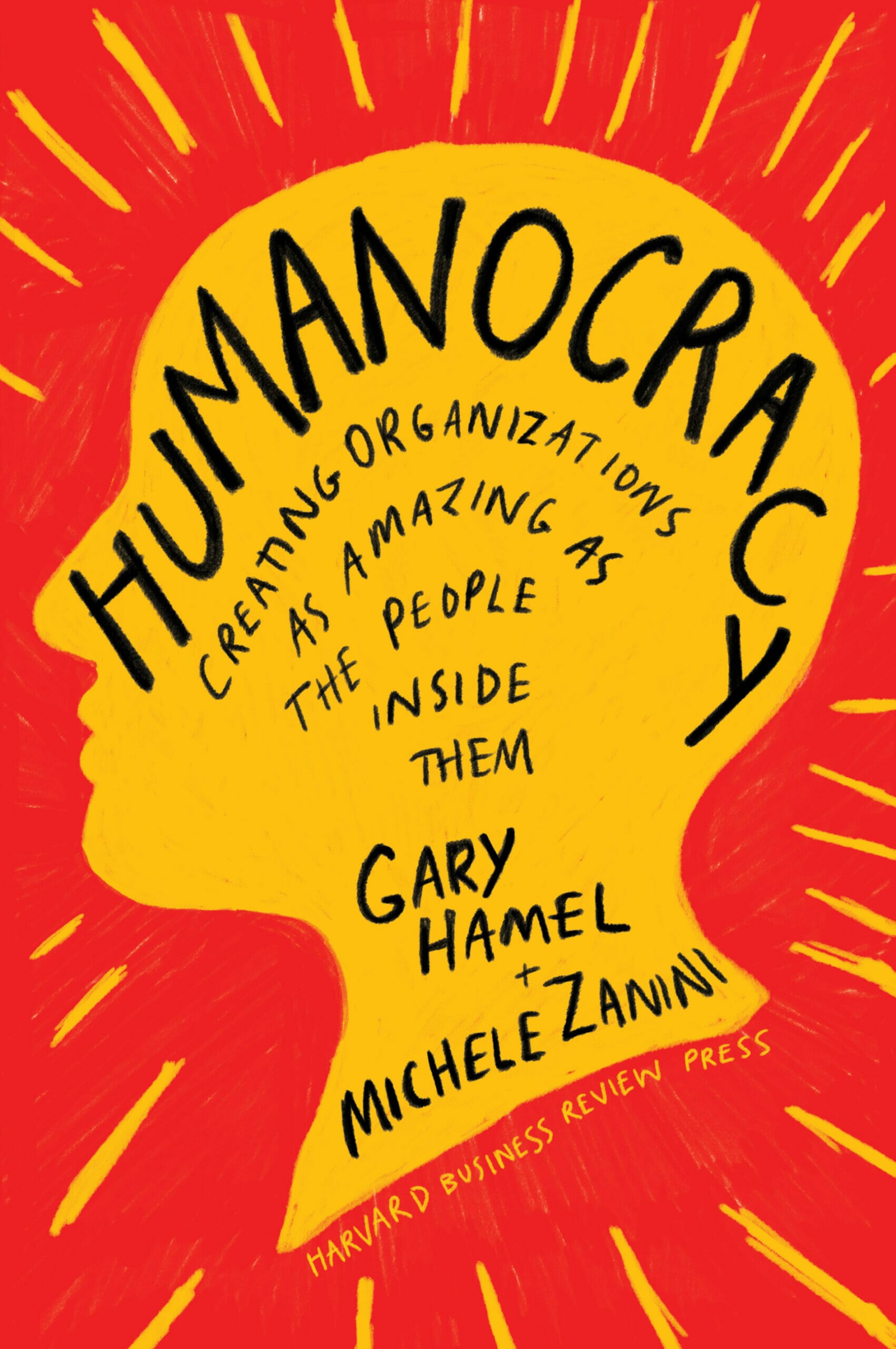
Humanocracy: Creating Organizations as Amazing as the People Inside Them
(Harvard Business Review Press, August 2020)
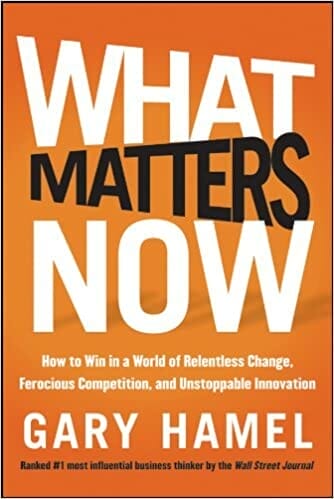
What Matters Now: How to Win in a World of Relentless Change, Ferocious Competition, and Unstoppable Innovation
(Jossey-Bass, February 2012)

Leading the Revolution: How to Thrive in Turbulent Times by Making Innovation a Way of Life
(Harvard Business Review Press, October 2002)

Searching for Significance: The Case for Reimagining Management Research
(Strategic Management Review, February 2023)
Praise for Humanocracy
- Named one of "The 10 Best Business Books of 2021" by Forbes
- Silver Medal Winner for Best Business Commentary Book in the 2021 Axiom Business Book Awards
- Named one of the "Top Ten Technology Books Of 2020" — Forbes
- Named one of the "Best books of 2020: Critics' Picks" by the Financial Times
- Named one of the "Best Business Books 2020: Strategy" by strategy+business
- Named one of 16 New Business Books You Need to Read in 2020 by Inc. magazine
"Anyone trying to reinvent a 'legacy' business should read 'Humanocracy'… Gary Hamel and Michele Zanini set out a practical view on how to address the transformation challenges many companies are dealing with. 'Humanocracy' highlights a lesson that has never been more important: businesses are all about people, and the more human we make them, the better."
Messrs Hamel and Zanini may be onto something. Too many people feel dissatisfied with their jobs. A Gallup survey of American employees in 2019 found that less than a quarter said they were expected to be innovative in their job; only one in five felt their opinions mattered at work. Unleash their creativity, and productivity will improve, job satisfaction will increase and workers in supposedly "low-skilled" jobs will be free to demonstrate their abilities. If so, the future of work needn't be gloomy after all."
"The authors present a fascinating new blueprint for organizational design that captures the few necessary benefits of bureaucracy, while avoiding the penalties. They also take readers inside exemplary businesses that have managed to upend the traditional bureaucratic model. This well-reasoned concept is fully developed around the authors' principles of humanocracy, and includes practical details on how to achieve revolutionary goals with evolutionary means."
"Rarely has the case for dismantling bureaucracy been made as effectively, passionately, and comprehensively. The time to start is now, and the book to read is 'Humanocracy', Hamel and Zanini's practical guide to creating work environments that give everyone the opportunity to flourish. This is essential to revitalizing our organizations and reinvigorating our economies."
"Hamel and Zanini have achieved two remarkable feats. They've produced one of the most cogent critiques of bureaucracy that I've ever read—explaining the many ways that bureaucratic organizations undermine human autonomy, resilience, and creativity. And they've issued a stirring call to do better—to build organizations that liberate the everyday genius of the people inside them. Packed with keen insights and practical guidance, 'Humanocracy' is an essential book."
"'Humanocracy' provides the reader with a road map to helping organizations unleash creativity, energy, and resiliency through leveraging the core of every organization—humans."
"'Humanocracy' is the most important management book I have read in a very long time. This is not just another book about the power of purpose or the joys of empowerment. Rather, it's a detailed, well-researched, data-driven, compellingly argued expose on the massive costs of bureaucracy in society. Hamel and Zanini offer an equally compelling argument for why it doesn't have to be this way, complete with a practical guide for creating organizations that really work."
"If an organization has ever crushed your hopes and dreams, this book just might help to rejuvenate you. It's hard to imagine a better guide to busting bureaucracies and building workplaces that live up to the potential of the people inside them."
"'Humanocracy' makes the case for replacing chain of command with chain of trust and radical transparency. It's a prescription for unlocking game-changing innovation and the value of every individual."
"'Humanocracy' is a must-read to survive and prosper in the future. The book is a tour de force."
"'Humanocracy' thoughtfully outlines why the time has come for organizations to abandon their bureaucratic ways and bring humanity back into the workplace. I found myself nodding throughout the book and thinking 'YES! This is it. This is the new management paradigm we've been needing for decades. Hamel and Zanini have done it!'"
"'Humanocracy' is the most insightful, instructive book for this new, purpose-driven decade and should be mandatory reading for all organizations seeking to thrive, survive, and, more importantly, make the human impact their teams long for."








